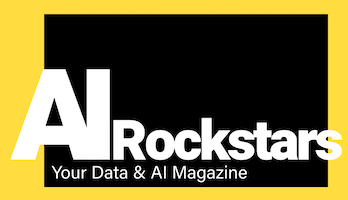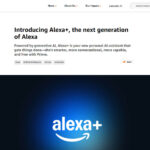With the release of the Amazon Nova model series, Amazon Web Services (AWS) is once again demonstrating its innovative strength in the field of generative artificial intelligence (GenAI). With a wide range of application areas and high-precision model architectures, this launch could have a decisive impact on the future of AI solutions. The combination of multimodality, performance and cost efficiency is particularly impressive.
The Amazon Nova model family: diversity and focus
The Nova series comprises four central models, tailored to specific user requirements:
- Nova Micro, a text-based model that prioritizes speed and low cost, is ideal for applications where fast processing is the focus.
- Nova Lite and Nova Pro focus on multimodality, which means they can process text, images and video. While Lite offers a cost-effective approach for everyday applications, Pro stands out with its ability to analyze large amounts of input (up to 300,000 tokens) – a perfect tool for more complex tasks such as visual question answering.
- The high-end Nova Premier model, soon to be released, aims for advanced analytical capabilities and highly complex reasoning, making it a potential gamechanger for industries such as research, healthcare and finance.

The basic functions are supplemented by specialized content generation models: Nova Canvas for professional image generation and Nova Reel, an AI-powered model for video production. Their performance is boosted by innovations such as detailed control options and security filters.
Technological innovation and business relevance
A strategic highlight is the integration of the Nova models into Amazon Bedrock. This platform combines powerful AI tools with business-specific features such as Retrieval Augmented Generation (RAG). In this way, Bedrock enables organizations to use their own databases to create AI responses that are precise and contextual.
In addition, Amazon’s proprietary Inferentia2 inference chips ensure drastically reduced computing costs and minimal latency. The operating costs of the Nova models are said to be 75% lower than comparable models on the market. With these optimizations, AWS is not only positioning itself as a technical pioneer, but is also addressing the key requirements of its enterprise customers: Efficiency and cost reduction.
Looking to the future, Amazon’s plan to gradually expand Nova’s capabilities is impressive: Speech-to-speech conversions as well as multimodal “any-to-any” models from 2025 could profoundly change the way people and AI systems communicate.
Global applications and new business prospects
Amazon Nova is already being positioned as a tool with global reach: Companies can create unique market interactions by supporting over 200 languages. Applications in document processing, marketing material creation and image-based decision-making processes are particularly relevant.
In advertising, for example, brands can use Nova Reel ‘s video-based control to implement concepts in a creative and scalable way. At the same time, Nova Canvas delivers high-quality visuals at record speed, a significant advantage in industries such as e-commerce and real estate.
Challenges and implications
Although the Nova models are equipped with impressive features, the question is how the market will react to them in the long term. With their lower price, these models could put pressure on competitors such as OpenAI, Microsoft and Google. Nevertheless, it remains to be seen to what extent the planned integration into existing AI systems and specific data landscapes can actually be implemented.
Another critical point is the handling of ethical concerns regarding the generation of visual and textual content. Although Amazon is addressing this through security mechanisms such as water signing, the growing debate about the regulation of AI technologies could influence further growth.
The most important facts about the update
- Amazon Nova sets new standards in generative AI technology through multimodal models and cost-efficient computing power.
- The Inferentia2 chips minimize operating costs by up to 75% and enable low latency.
- Integration in Amazon Bedrock opens up personalized applications for companies based on their own data.
- Complementary models such as Canvas and Reel support image and video creation at the highest level.
- Future releases such as voice-to-voice model and any-to-any model promise profound innovations by 2025.
Sources: Amazon







